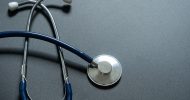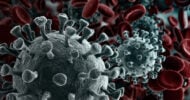An international ACEP member has been giving real-time updates to the ACEP Disaster Section about the developing situation in Japan. He agreed to share the information with the emergency medicine community and will try to continue to provide updates when he can.
Friday, March 11, 2011 1:13 AM CST
Hello. I am Dr. Takashi Nagata, international ACEP member and a Japanese emergency physician working in the southern part of Japan.
Currently we are suffered from a sudden catastrophic earthquake and tsunami in the northern part of Japan.
The damage is still under investigation; however, it seems serious to see TV news.
Because I do not have enough information, I am not sure we need international disaster relief work; however, I would like to ask all the members in this mailing list to follow the situation.
Friday, March 11, 2011 3:18 AM CST
Dear all,
We are fine currently.
This earthquake and tsunami in Japan is the most serious in the past.
It mainly hit Tohoku area, the northern part of Japan main land.
In Miyagi prefecture and Iwate prefecture, they had quite serious damage.
There was a catastrophic damage caused by tsunami along Natori river in Miyagi prefecture and Port Kamaishi in Iwate.
In my impression, the damage of tsunami is more devastating than earthquake itself.
Tokyo was also attached; however, the damage seems relatively limited.
In Tokyo, the railway is stopped, and most businessperson (more than 1 million people) will have to stay in Tokyo.
People try to be calm. So far there is no major fire or building collapse.
According to national disaster plan, the medical response teams have started working.
However, the airports (Naneda international airport in Tokyo and Miyagi airport) are closed now.
So, the teams in the neighboring prefectures try to move by motor vehicles.
The teams in the remote areas are being stand-by.
I try to keep sending information.
Thank you for your kindness.
Friday, March 11, 2011 5:11 AM CST
Dear all,
It is night time now.
It is difficult for us to rescue and search for the victims, and we have to wait for the sunrise at least 10 hours.
As far as the media reports, the situation seems stable. Many hospitals are intact in the affected area.
And most people stay in the designated shelters. Food and electric power can be provided.
However, we do not know the whole impact of the earthquake and tsunami.
Military, police, fire, EMS and disaster medical teams have already been deployed to the scene.
There are 11 atomic power plants in the affected area, and so far, all of them are stopped automatically. So far there is no risk of radiation leakage.
Friday, March 11, 2011 7:50 AM CST
We estimate about at least 1,000 fatalities and 2,000 severe injuries in the affected area.
The access from the neighboring prefectures to the affected area is limited. And rescue/search activity does not work well.
Now the media reported that 200-300 drowning were found dead now.
The affected area, Tohoku, is next to Tokyo, and we would like to send teams from Tokyo to the front line; however, the hospitals are busy to work for the overcrowding mild patients in the urban area. So, we cannot afford.
We guess that the situation is like Tsunami in Asia, 2005 or Hurricane Katrina in 2006.
In addition to emergency disaster relief in the acute phase, I think we will need public health approach for the affected area in the long time.
Friday, March 11, 2011 8:52 AM CST
Dear all,
We still have tsunami repeatedly at night, and the most coast lines of Japan become alarm zone now.
The government issued the emergency of nuclear plant in Fukushima prefecture.
The system has already shut down the reactor and then caused problems with its cooling system. So far there are currently no reports of radiation leakage. Military and fire are working hard for it now. These power plants are located about 200 km away from Tokyo.
Now we have several major fires in several places. Rescue activity is quite difficult because of darkness.
In Kobe earthquake in 1995, about 6000 people died, but this occurred in the single prefecture.
This earthquake and tsunami attached multiple areas and regions in Japan.
It is sad to say, but this is the largest disaster we have ever had.
After 6 hours, we will have sunrise.
Friday, March 11, 2011 4:58 PM CST
Dear all,
Now it is day time. Information is still fragmented.
The damage in the affected area (Miyagi, Iwate, Fukushima, Aoromi, and Ibaragi) is devastating, and we do not know the whole damage.
There is a minor leakage of radiation from the nuclear power and people around the plants are ordered to be evacuated; however, we are concerned about the meltdown. The alert in the system is rising.
At least 1,000 people are dead or missing in Hohoku area, and the number is still rising.
Tokyo seems okay. The railways and subways works in 30-50% of their capability. Haneda international airport and Narita international airport are almost intact, but the several airports in the affected area are closed or destroyed.
Many DMATs have been sent to the scene by the military aircraft.
Japan Medical Association has started the coordination to do medical support to the affected area.
Friday, March 11, 2011 6:12 PM CST
Dear colleagues,
It is quite difficult to access from neighboring prefectures to the affected area, because the many national roads and highways are closed or destroyed. And it is still in the end of snow season, and the road conditions are snowy and muddy.
Many colleagues in ACEP are proposing us the international disaster aid, and we sincerely appreciate you all.
However, this is my personal thought, and it is quite difficult to accept disaster relief teams from outside Japan in the next few days.
Some academic institutions, hospitals, and organization will be the counterparts for the foreign disaster relief teams, but so far, I have no contact information. I am staying at the safe place which is located 1000 kilometer away.
If you will come to Japan, I mention that the difficulties in working in Japan is language barrier. I am sorry to say, but most Japanese people are capable to read and speak English, but they are very shy to communicate with the people who speaks English.
Safety is not secured in the affected area. We are very careful about the second attack of earthquake and tsunami and risk of radiation exposure.
On the contrary, security (riot, confusion, violence, etc) will not be an issue for disaster relief work.
March 11, 2011 10:21:03 PM CST
Dear all,
Several DMATs teams can arrive in the Ground Zero, and try to collect the information and establish the command structure in the prefecture government offices.
The number of fatalities raised to more than 1,400 now.
Sendai airport in Miyagi, Hanamaki airport in Iwate, and Ibaragi airport in Ibaragi are not available now. They are destroyed by tsunami.
The tsunami arrived 10 kiliometer from the sea coast in some regions, and many villages/towns located inside are damaged.
Narita and Haneda airport in Tokyo are working.
Kansai, Nagoya and Fukuoka international airport are also intact.
The people live within 10 kilometer from the nuclear power plant named Fukushima 2nd plant are ordered for evacuation, and about 60,000 people are being left.
Korean rescue teams will be deployed soon.
I hope this will be helpful.
March 11, 2011 11:10:22 PM CST
Dear colleagues,
Most of the members might not be familiar with the geographical condition of Japan.
Please refer to this site (http://tmapps.esri.com/EQ_Japan/index.html).
It is day time, and all are working hard for search and rescue activity in addition to medical support.
About 50,000 military teams are sent to the scene, and will work with US forces together.
At least 210,000 are evacuated from the scene.
The two nuclear power plants are not under control, but there is no information about melting down.
March 11, 2011 11:22:06 PM CST
The media mentioned that there is high possibility of melting down in the nuclear power plant now.
This information is not double-checked.
March 11, 2011 11:37:03 PM CST
Dear my friends,
Now I will go to Tokyo to join the disaster response, and will be away from the line for a while.
This is national emergency, and I will do my best for my country as an emergency physician.
Probably I will work at the headquarter office of Japan Medical Association to work for intelligence, planning, and logistics.
I sincerely appreciate you for your warm hearts.
See you soon.
Takashi Nagata from Fukuoka, Japan
March 12, 2011 2:29:10 AM CST
The present situation of nuclear power is critical.
We have another earthquake near the plant, and there was an explosion, and the detail is under investigation.
It is same as Three Miles now, and there is high possibility of Chernobyl disaster in Japan.
There are several plants there, and the worst scenario is consequent reaction of Chernobyl disasters, which we have never experienced before.
March 13, 2011 5:48:45 PM CDT
I apologize you for my long absence. In the last 36 hours, I spent time for moving from my home town, Fukuoka, to the affected area.
I am working in Iwaki city, Fukushima prefecture now. Iwaki city is about 30 km away from the nuclear power plant, and so far, the city is not inside the red zone. The population of the city is about 340,000, and the land is 11,231,34 km2. More than 50 people were killed by earthquake or tsunami.
Based on the experience of Hurricane Katrina, we decided to do quick survey for the shelters in the city on March 13.
I visited 8 shelters on that day. The range of the people in the shelters is between 200 and 2700, and there is need for emergency medicine support. Many older patients lost their daily medications, and have several complaints.
The situation is not so critical, however, people are fatigued and nervous. At the same time, people understand their situation very well, and try to be calm. There was no panic or riot. The condition of the shelters are well-disciplined and managed. Food, water, and sanitation are provided well, but not sufficiently. On March 14, we will start working for them.
Regarding the situation in the city, water is not available. Electricity, internet, and wire communication are working to some extent. There are still minor to moderate earthquakes in the scene.
Compared with Iwate or Miyagi, where thousands of people are found to be dead, the damage of Fukushima prefecture and Iwaki city is not so serious. However, in addition to the damage caused by earthquake and tsunami, Fukushima is facing with the issue of radiation disaster. This is a complex disaster, and the decisions are very difficult to make.
I appreciate you for your proposals of the support. So far, it is difficult for us to coordinate the international aid teams now.
Although, the situation is complicated and critical, I think I am very proud of being Japanese and working as an emergency physician in the frontline. I will do my best for my country.
Please keep in touch.
March 14, 2011 8:35:33 PM CDT
I am fine, and working here in Iwaki, Fukushima. As you know well, the situation is complicated and changing.
It is difficult to present the situation precisely. However, people are very calm now.
Yesterday, I visited two shelters and prescribed medication. There were a lot of old people who lost their medication.
Also, I am supporting the radiation screening point and DECON teams located at the local heath center. About 90 people came here for consultation one day.
I am staying inside now, and watching the situation carefully.
I recognize my weakness and limitation.
Takashi Nagata is an international ACEP member and a Japanese emergency physician working in the southern part of Japan.
This post first appeared in The Central Line, the blog of the American College of Emergency Physicians. Reprinted with permission from the ACEP.
Submit a guest post and be heard on social media’s leading’s voice.














![AI in American medicine [PODCAST]](https://www.kevinmd.com/wp-content/uploads/AI-in-American-medicine-190x100.jpg)





![A tribute to primary care [PODCAST]](https://www.kevinmd.com/wp-content/uploads/A-tribute-to-primary-care-190x100.jpg)
